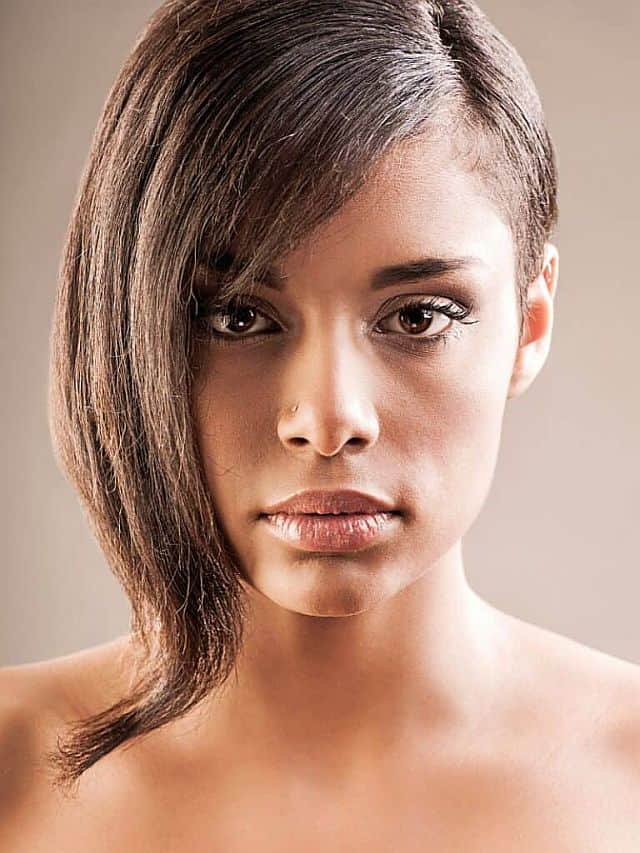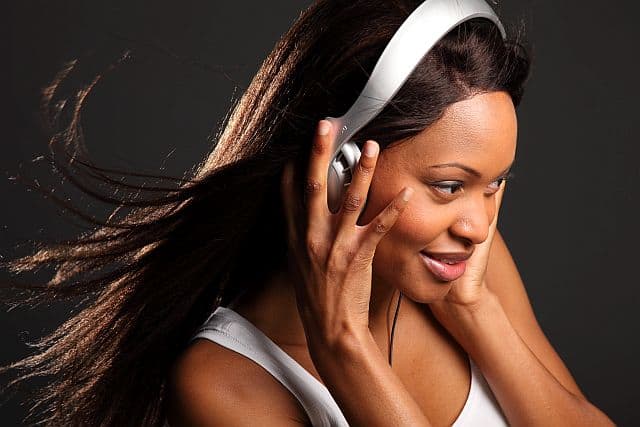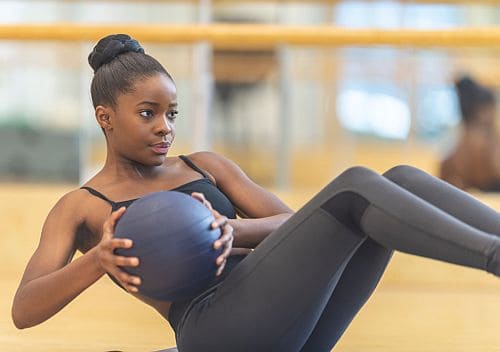Last Updated on December 16, 2022 by Gaga
The hair relaxing process involves the use of strong chemicals designed to break down the protein bonds in the hair. To do the job, the chemical straightener needs to remove the invisible hair’s protective layer. This can leave hair dry, porous, and prone to breakage. To ensure that your relaxed hair stays bouncy, smooth, and frizz-free, proper care is essential.
Black hair requires very gentle handling because relaxing makes this type of hair very fragile and prone to damage from heat and chemicals. Hair that has already undergone some type of chemical processing can be seriously damaged by chemical relaxers.
How to Nourish Relaxed Hair

The relaxer is a rather strong chemical that, if left too long on the skin or scalp, will cause severe chemical burns. It is important to thoroughly rinse hair with water to get the chemicals out of your hair. Any trace of a relaxer that is left on your hair will continue to process and may cause your strands to break.
After rinsing out the relaxer proceed with the neutralizing shampoo to eliminate traces of relaxer that may remain in your hair. Active ingredients in the neutralizer will penetrate the hair shaft and stop the relaxer from working. Leaving the neutralizing shampoo in the hair for a few minutes helps restore chemically-treated hair to the natural pH balance.
Relaxers leave your hair very, very vulnerable. After rinsing out the neutralizing shampoo, apply a protein conditioning treatment to fill in the cracks in the hair shaft. The relaxing process leaves the cuticle lifted, so your hair will be ready to absorb and replenish the lost protein.
Some stylists prefer doing the protein treatment immediately after rinsing out the relaxer and before the neutralizing shampoo.
Some hair professionals suggest doing Olaplex Stand-Alone Treatment instead of a protein treatment, to reconnect broken bonds in your hair and prevent shedding.
How to Wash Relaxed Hair
Shampoo your hair twice a week and use conditioner after each shampoo. Use a moisturizing, sulfate-free shampoo and moisturizing conditioner formulated for chemically treated hair.
After applying shampoo, gently massage the scalp with your fingertips. Make sure not to use your nails. Using your nails can create tangles and cause breakage.
Apply conditioner and let it work for five to ten minutes. Untangle the hair using a wide-toothed comb. Work from the ends to the roots, with the conditioner still in your hair.
When you have finished combing rinse your hair with lukewarm water. Use cool water for mid-lengths and the ends of your hair to seal the cuticles and prevent frizz.
Wrap a soft towel around your head to remove water from the hair. Don’t squeeze or wring out your hair, just let the towel gently soak up the excess water. Follow with a cotton shirt and leave it on for 10-15 minutes.
Always use a leave-in conditioner after washing and conditioning relaxed hair. Make sure to detangle your hair thoroughly at this stage.
Take a small amount of coconut oil between your fingers and coat the ends of your hair. Coconut oil penetrates the hair shaft to help retain moisture inside the hair.

Co-Washing Relaxed Hair
Shampooing too often can dry out chemically treated hair due to harsh detergents in traditional shampoo formulas. If you want to wash your relaxed hair more often than twice a week, “co-washing“, or “conditioner-only washing” is a gentler alternative to shampooing. This no-shampoo method can be done with a lightweight moisturizing conditioner, that cleanses and refreshes your hair without stripping the scalp of its natural oils. Washing with a cleansing conditioner adds moisture to your hair instead of taking it away, and can even be done daily.
Air Drying
Air drying is the healthiest option to dry your relaxed hair. To help your hair stay straight, wrap it into a cross wrap and tie it with a satin or silk hair scarf. Another way to get straight hair without heat is to smooth all the hair back into a loose bun.
For a nice, wavy look, the roller set is the best way to keep hair smooth without using too much heat. You can also put your hair in a braid and leave it that way until it is dry.
If you do blow-dry, let your hair air-dry partially before using the hairdryer. Put your blow-dryer on the lowest heat setting and hold it at least ten inches away from your hair. Also, make sure to constantly keep the device in motion.
Deep Conditioning

Deep condition your relaxed hair at least every fortnight. Relaxers strip the hair of its natural oils. Deep conditioning helps rehydrate chemically treated hair and makes it strong enough to withstand styling. Coat your hair in the conditioner, starting from the ends. For best results, use a plastic cap and go under a hooded dryer. Let the conditioner sit for up to 30-45 minutes using a low heat setting. You can also put on a plastic cap and leave the treatment overnight.
Apply a protein-based deep conditioner once a month to strengthen your hair and replenish the lost protein. Make sure not to do protein treatments frequently, as too much protein can cause your hair to become weak and brittle.
Hydrolyzed Proteins
Adding hydrolyzed proteins to your shampoo or conditioner can be very beneficial for relaxed hair. Chemical relaxers can leave hair extremely dry, brittle, and prone to tangling and breakage. Hydrolyzed proteins added to your hair care products can fill in damaged areas in the cuticle layer. This strengthens your hair from within and reduces the risk of breakage.
Hot-Oil Treatment
Do a hot-oil treatment every week to add extra moisture and give body to your hair. Gently warm olive, coconut, or jojoba oil, and massage it into your freshly washed hair. Wrap your head in a plastic shower cap and leave the oil on for half an hour before rinsing.
Night Time Care
Relaxed hair requires special care for bedtime. Conventional cotton pillowcases tend to rob the hair of moisture, and can cause friction and tangles. Sleeping on a satin pillow keeps your hair from getting tangled and prevents dryness. If you don’t have a silk or a satin pillowcase, tie your hair in a bun or wrap it in a silk cap. Apply a leave-in serum to the ends to keep them moisturized while sleeping.
MY RELAXED HAIR NIGHT-TIME ROUTINE by Healthy Hair Junkie
Heat Styling
Avoid using heat when styling your hair, as the high heat can cause relaxed hair to become very dry and prone to breakage. You can style your hair occasionally, using a high-quality, ceramic flat iron with adjustable heat controls. Be careful, because repeated usage of flat iron can burn relaxed hair.
When you are using a curling iron, hold the barrel cover slightly open – so the hair simply passes over the barrel without being tagged or pulled by pressure from the barrel cover.
Brushing
Use a wide-tooth comb or your fingers to gently detangle your hair. Never use a brush while your hair is still wet because brushing vet hair can cause breakage. Gently brush with a boar bristle brush and avoid pulling and tugging on your hair. Overbrushing relaxed hair can cause split ends and hair breakage.
Protective Styles
Wearing relaxed hair down daily is not advisable. Protective styling is one of the best ways to minimize hair breakage. Wearing the hair in a protective style helps hide the ends from harsh elements and from rubbing on your shoulders and clothes. Popular protective styles include buns, chignons, braids, twists, and weaves. Create protective styles that will last at least for a few days with minimal touch-ups and give your hair a rest from styling.

Dying Relaxed Hair
You should wait at least two weeks after a relaxer service before applying permanent hair color. If the hair is brittle and prone to breakage, permanent hair color is not recommended.
Because chemical relaxers are so harsh on hair, consider picking a dye that doesn’t require bleach or ammonia. Restore color vibrancy and shine with a tinted conditioner, or use temporary and semi-permanent colors as well as ammonia-free hair colors. These colors can be used immediately following a chemical relaxer. Apply hair gloss or hair glaze to revive color and add glossy shine.
To cover gray hair, use demi-permanent hair color. To hide your gray roots between color services use temporary root touch-up products – like root touch-up sprays, color wands, and color touch-up powders.
Trimming
Keep your hair trimmed to remove dry split ends and uneven growth. Regular trims will prevent further damage to your hair. Get a trim every 2-3 months.
Healthy Diet
To increase your hair’s protein content, eat healthy meals, and incorporate a lot of protein-rich food into your diet. Drink plenty of water to keep your hair hydrated from the inside. Your hair will be healthier and resistant to breakage.
How to Avoid Over-Processing
Before the next relaxer service, make sure it’s been at least 10 weeks since your last touch-up. Applying relaxing treatments more frequently could lead to breakage and thinning. When retouching, only relax your new growth. Don’t use strong formulas every time you get your hair relaxed.

Gaga is a blogger and founder of the Softer Hair website. She often says that insomnia is to blame for her first blogging attempts. Being the night owl, she hated the morning alarm. She left her office job and returned to what she loved most - writing.


My hair is a lot on the head but very weak it takes about 8months to get growth, what chemicals can use for my retouch?
Please do NOT apply protein treatment BEFORE using your neutralizing shampoo.
From the moment you apply your relaxer cream to your hair, The chemical reaction is occurring. This doesn’t stop when you initially rinse out your cream. Neutralizer and neutralizer only must be used to stop the process. I encourage you to leave the protein treatment In for up to 3 minutes (if used prior to neutralizer) and for the time suggested AFTER hair has been neutralized.
My hair is too thin and too soft. Please, what’s the type of relaxer to use on my hair?
Air drying is a great tip. Definitely inconvenient if you are short on time but so worth it for the health of your hair. Sleeping on a silk pillowcase versus polyester satin is a great option too. Silk helps your skin retain its natural moisture and will not dry out your hair. They also sleep better than polyester satin as it is a natural temperature regulator. Polyester satin is better than cotton to reduce breakage, dryness, and hair being pulled out but if you are able, opt for a silk pillowcase instead.
can I put my hair up into a tight pony tail the same day is was relaxed? I have
googled this in every way I can think of to phrase it and cant find any information.. I am having my hair relaxed for the first time on the same day as a dance performace where I have to put my hair up.
You can put your hair in a ponytail style. Be sure to be gentle with your hair as relaxers will cause your hair to be fragile. First allow your hair to air dry. I usually wrap mine using a comb or I comb it straight down and let it dry. Then style it. Use an elastic hair tie with no metal and be sure to protect your edges with moisturizer. Use oil to protect your ends and make sure your ponytail is not so tight that it’s pulling your scalp. Lastly use a leave-in conditioner made for relaxed hair. One I use is As I Am leave-in conditioner to soften and strengthen my hair. Be sure to follow the directions.